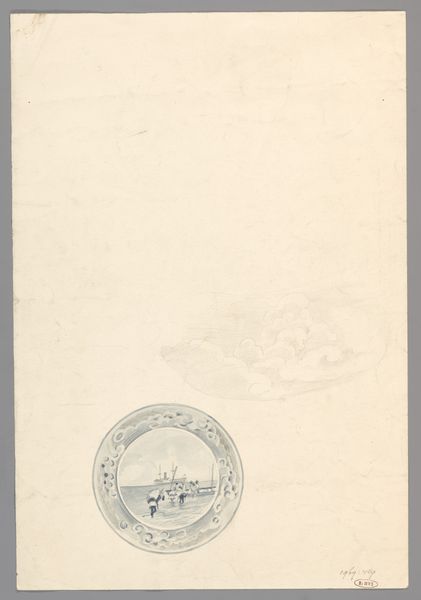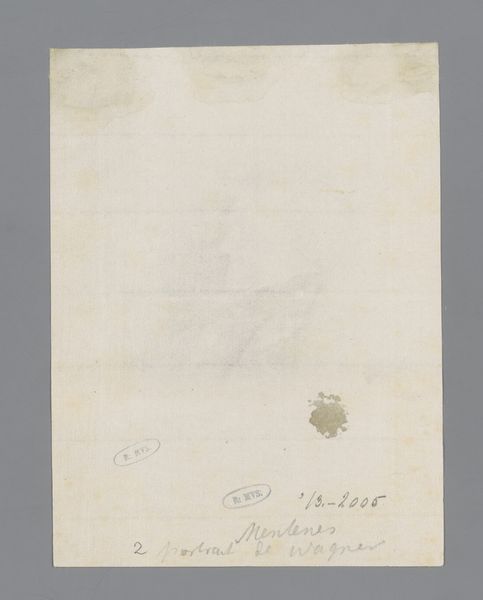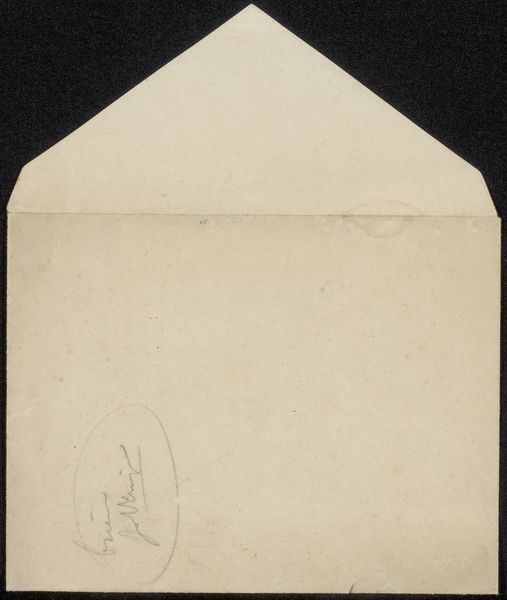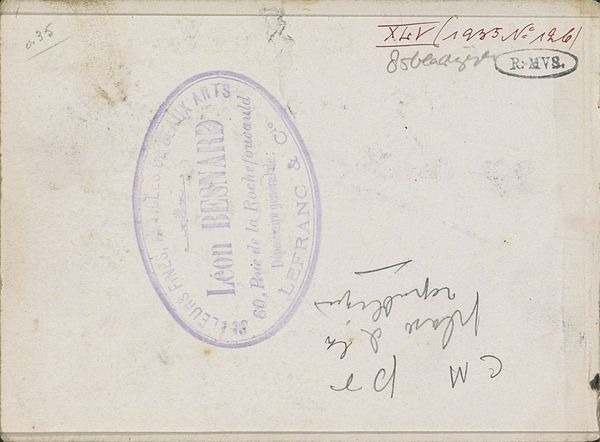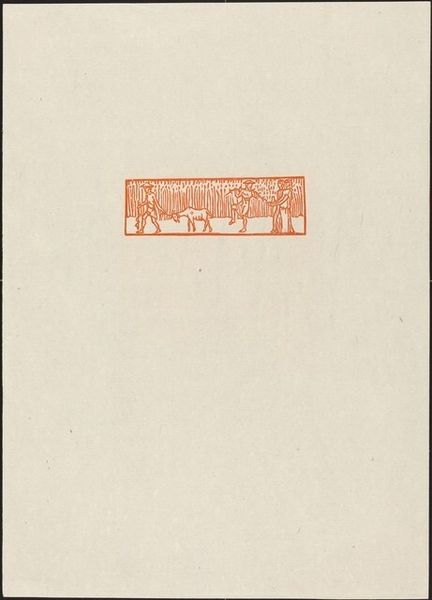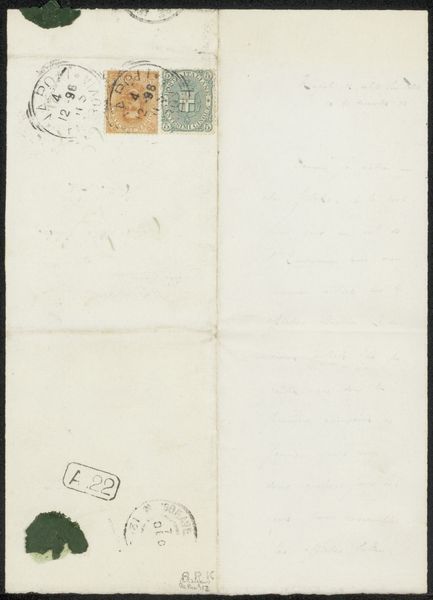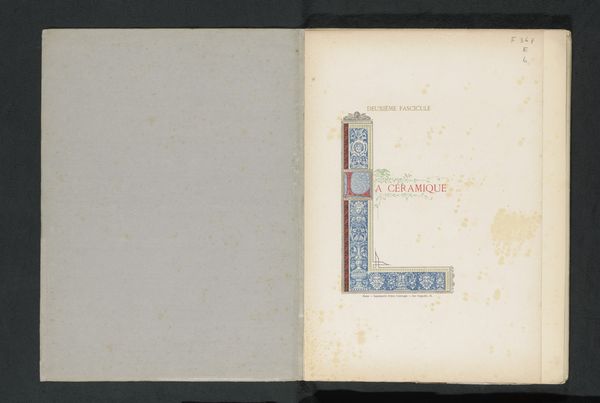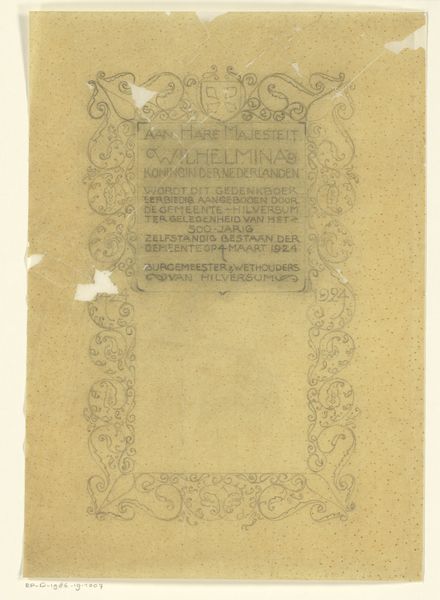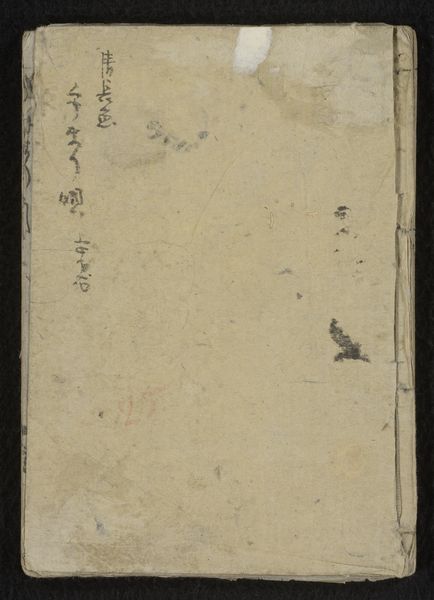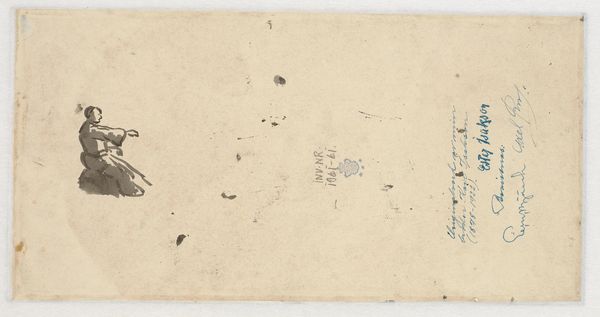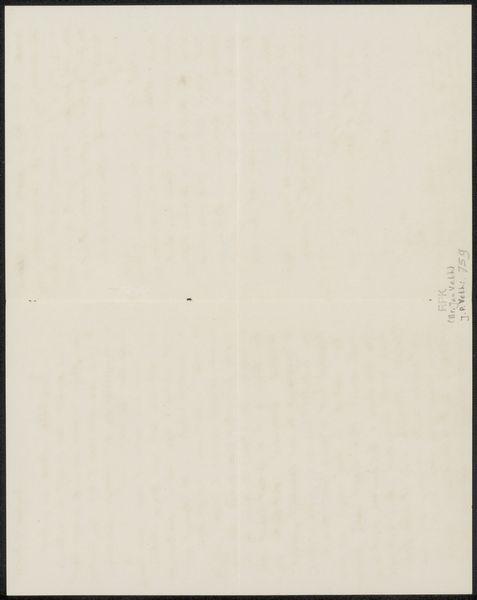
Two Spades (black), from the Playing Cards series (N84) for Duke brand cigarettes 1888
0:00
0:00
Dimensions: Sheet: 2 3/4 x 1 1/2 in. (7 x 3.8 cm)
Copyright: Public Domain
Curator: Here we have a playing card, "Two Spades (black)" dating back to 1888, a piece from the Playing Cards series for Duke brand cigarettes. Editor: Intriguing. Immediately, the stark simplicity catches my eye. The spade symbols are so graphically bold against the off-white background. Curator: The card exemplifies a moment when consumer culture intertwined with artistic production, even incorporating elements of ukiyo-e into its design. Mass-produced prints like these reflect shifting manufacturing techniques, the expansion of advertising, and labor practices of the time. Consider who produced it and the audience it was meant for. Editor: Right, but if we just consider this design as a pure visual, the contrast creates a balanced composition that still speaks to me. I am mostly focused on how the basic formal structure influences meaning here. It cleverly employs symmetry and repetition, doesn't it? Curator: The symmetry certainly works as a tool to standardize the design for printing. Think about the context; W. Duke, Sons & Co., wanted efficient design and marketing in their cigarette packs. The ubiquity of the imagery served a particular goal, shaping consumer habits and brand recognition. Editor: Well, I appreciate how these minimalist shapes create a sense of immediate recognition, so while understanding this commercial purpose enriches our understanding of the object, its aesthetic appeal remains even if detached from that specific context. Curator: Indeed, its aesthetic remains intertwined with its function. Studying such artifacts helps illuminate how cultural and economic forces shaped visual language even in seemingly minor art forms. It allows us to question traditional hierarchies separating "high" and "low" art. Editor: And even within those constraints, the form has resonance! I guess that this contrast also gives me some insight of an ephemeral character... Thank you, I will keep thinking about how its form functions to represent cultural information in broader art context.
Comments
No comments
Be the first to comment and join the conversation on the ultimate creative platform.
